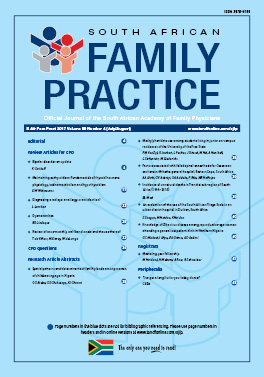Spatial patterns and determinants of fertility levels among women of childbearing age in Nigeria
Keywords:
Bayesian analysis, count data, fertility, Nigeria, spatial analysis
Abstract
Background: Despite aggressive measures to control the population in Nigeria, the population of Nigeria still remains worrisome. Increased birth rates have significantly contributed to Nigeria being referred to as the most populous country in Africa. This study analyses spatial patterns and contributory factors to fertility levels in different states in Nigeria. Method: The 2013 Nigerian Demographic Health Survey (NDHS) data were used to investigate the determinants of fertility levels in Nigeria using the geo-additive model. The fertility levels were considered as count data. Negative Binomial distribution was used to handle overdispersion of the dependent variable. Spatial effects were used to identify the hotspots for high fertility levels. Inference was a fully Bayesian approach. Results were presented within 95% credible Interval (CI). Results: Secondary or higher level of education of the mother, Yoruba ethnicity, Christianity, family planning use, higher wealth index, previous Caesarean birth were all factors associated with lower fertility levels in Nigeria. Age at first birth, staying in rural place of residence, the number of daughters in a household, being gainfully employed, married and living with a partner, community and household effects contribute to the high fertility patterns in Nigeria. The hotspots for high fertility in Nigeria are Kano, Yobe, Benue, Edo and Bayelsa states. Conclusion: State-specific policies need to be developed to address fertility levels in Nigeria. (Full text of the research articles are available online at www.medpharm.tandfonline.com/ojfp) S Afr Fam Pract 2017; DOI: 10.1080/20786190.2017.1292693
Section
Research Articles
By submitting manuscripts to SAFP, authors of original articles are assigning copyright to the South African Academy of Family Physicians. Copyright of review articles are assigned to the Publisher, Medpharm Publications (Pty) Ltd, unless otherwise specified. Authors may use their own work after publication without written permission, provided they acknowledge the original source. Individuals and academic institutions may freely copy and distribute articles published in SAFP for educational and research purposes without obtaining permission.

